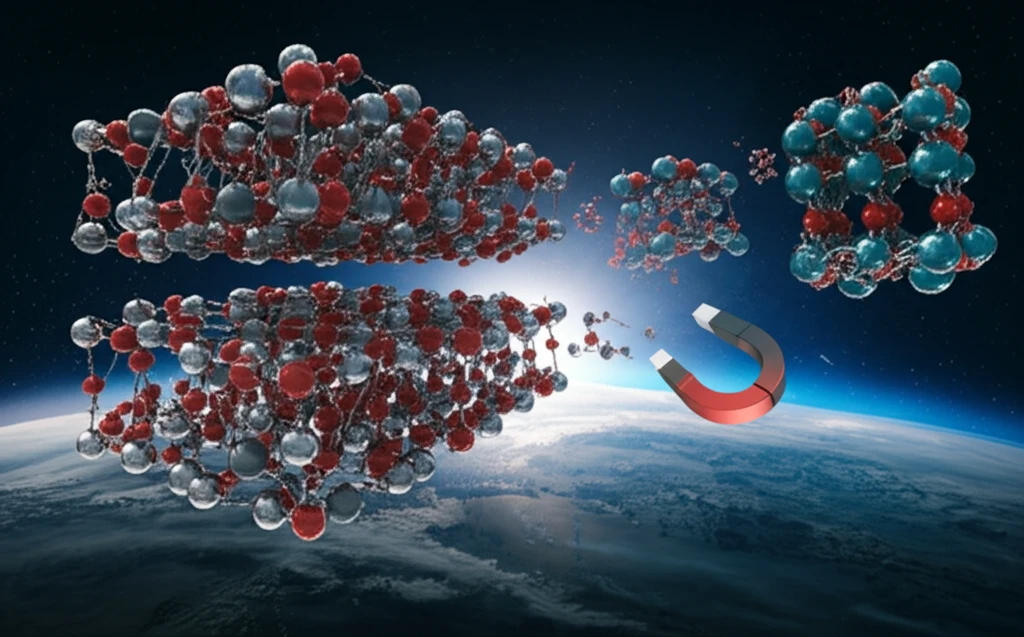
Magnetocaloric Marvel: Can This Affordable Compound Replace Rare Earths in Cooling Tech?
"Unlocking the potential of AlFe2B2: A deep dive into its magnetic properties and how it could revolutionize magnetic refrigeration, offering a sustainable alternative to expensive rare earth materials."
The quest for efficient and environmentally friendly cooling technologies has led researchers to explore alternatives to traditional gas expansion systems. These systems, while effective, contribute to environmental damage, spurring the search for cleaner solutions. Magnetic refrigeration, leveraging the magnetocaloric effect (MCE), has emerged as a promising candidate.
Magnetic refrigeration eliminates harmful synthetic refrigerants like chlorofluorocarbons (CFCs), hydrofluorocarbons (HFCs), and hydrochlorofluorocarbons (HCFCs). The focus has shifted towards developing advanced solid magnetic refrigerants, rigorously tested in functional magnetocaloric devices. This parallel effort has also spurred innovation in cooling device design, signaling a move towards sustainable cooling technologies.
A key factor in magnetic refrigeration is finding materials with a large MCE that can operate under relatively low magnetic fields (less than 2T), achievable with permanent magnets. This has led to research into compounds like Gd5Si4-xGex, LaFe13-xSix, Yo.4Gd0.6C02, and MnFeP(As, Ge). Among these, the intermetallic compound AlFe2B2 stands out due to its potential as a cost-effective alternative to gadolinium, which faces rising prices due to its rare earth classification.
AlFe2B2: A Cost-Effective Magnetocaloric Material

The intermetallic compound AlFe2B2, synthesized in 1969 by Jeitschko, has garnered attention for its potential in magnetic refrigeration. Belonging to the AIM2B2 materials class (M = Fe, Mn, Cr), AlFe2B2 has been identified as having an orthorhombic structure with either ferromagnetic or paramagnetic properties at room temperature.
- Crystal Structure: Orthorhombic (Cmmm)
- Cell Parameters: a = 2.923(10) Å, b = 11.0337(14) Å, c = 2.8703(3) Å
- Atomic Positions: Aluminum, iron, and boron atoms occupy specific positions within the crystal lattice.
The Future of AlFe2B2 in Magnetic Refrigeration
The research indicates that AlFe2B2 holds promise as a viable material for magnetic refrigeration, particularly due to its cost-effectiveness and the abundance of its constituent elements. Further studies and improvements could enhance its performance, making it a competitive alternative to rare earth-based materials in cooling technology. The findings suggest that AlFe2B2 and its derivatives could significantly contribute to more sustainable and economically feasible magnetic refrigeration systems.
